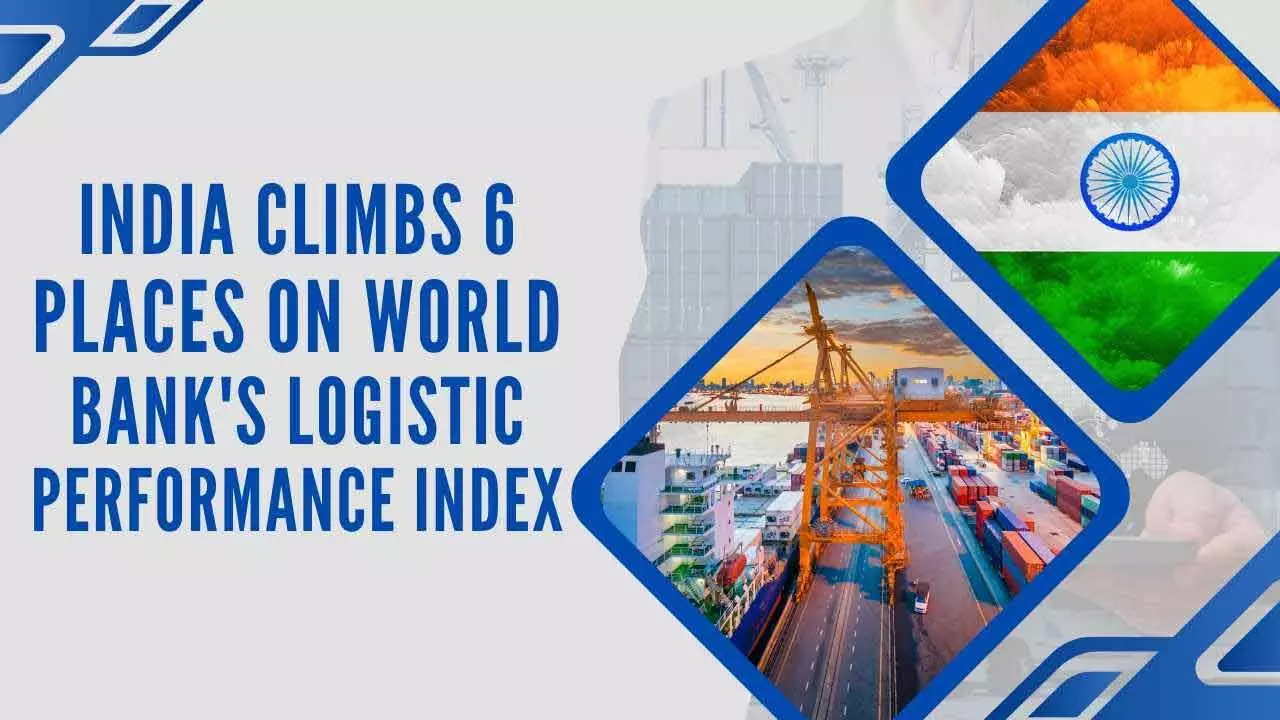Lower logistics and supply chain costs can significantly bolster growth
The e-commerce boom and growth in international trade are pushing the need for enhanced logistics solutions
Lower logistics and supply chain costs can significantly bolster growth

India's rank in the World Bank’s Global Logistics Performance Index improved to 38 in 2023. It is aiming to break into the top 25 by 2030
Rubix Data Sciences provides insights into the Indian logistics sector. The Indian logistics industry is expected to grow at an impressive CAGR of 11 per cent, reaching a size of $468 billion by FY2027.
The logistics sector is a major employment generator and currently provides livelihoods to over 22 million people, with a projection to add 10 million new jobs by 2027.
Global standing: India's rank in the World Bank’s Global Logistics Performance Index improved to 38 in 2023. It is aiming to break into the top 25 by 2030.
Roads account for more than 60 per cent share of logistics transportation; there has been a 500 per cent increase in the road transport and highway. Railway freight loading grew at five per cent CAGR from FY2018 to FY2024 and stood at 1,591 million tonnes (159.1 crore tonnes) in FY2024.
Dedicated freight corridors are expected to play a critical role in operational efficiency. The Indian air cargo industry has overcome the challenges of the pandemic period and recorded a robust CAGR of 23 per cent from FY2021 to FY2023.
Shipping has also grown, and in FY2024, major ports, which account for nearly 55 per cent of port traffic, handled 819 million (81.9 crore) metric tonnes of cargo traffic, recording seven per cent CAGR between FY2021 and FY2024.
The low share of infrastructure spending as a percentage of GDP (3.2 per cent) and the high logistics expenditure (13 to 14 per cent of the GDP) are the two major challenges for the logistics industry in India.
Digitalisation, improved connectivity and an increasing adoption of technologies like Radio Frequency Identification (RFID), Global Positioning System (GPS), Internet of Things (IoT), and AI are enhancing operational efficiency and reducing costs.
The e-commerce boom and growth in international trade are also driving the need for more efficient logistics solutions.
The government wants to bring down the logistics and supply chain cost in India, which stands at 13 -14 per cent of the GDP to eight per cent, as per global standards.
The unified tax regime and improved logistics infrastructure have encouraged market expansion and growth. Logistics companies can now explore new markets more easily within India, leading to overall growth and development of the sector.
Outstanding bank credit to road transporters grew by 15 per cent CAGR (from the end of March 2019 to the end of March 2024) and stood at INR 2.3 trillion (INR 2.3 lakh crore), indicating robust expansion and increased investments in this segment.
Outstanding bank credit to shipping companies declined by one per cent CAGR (from the end of
March 2019 to the end of March 2024) and stood at INR 71 billion (INR 7,100 crore). This could be a reflection of challenges facing global supply chains due to geopolitical uncertainties like the Ukraine-Russia conflict and attacks on ships passing through the Red Sea.
Outstanding bank credit to aviation companies grew by seven per cent CAGR (from the end of March 2019 to the end of March 2024) and stood at INR 432 billion (INR 43,200 crore). This growth is likely to have increased air travel demand, expansion of airport infrastructure, and strategic investments by both domestic and international players.
The road logistics industry is highly unorganised, with small sized players (having less than five trucks) accounting for a majority share.
Indian Railways has operationalised over 90 per cent of its Dedicated Freight Corridor (DFC), which is expected to further lower logistics costs through the use of higher axle load trains and Double Stack Container (DSC) trains. This will also stimulate development of new industrial hubs and GatiShakti cargo terminals.
International air cargo accounts for 70 per cent of total airfreight sector while domestic cargo makes up the balance 30%. Of the total outbound international airfreight traffic, Africa and the Middle East account for 47 per cent share followed by Europe (33 per cent), Asia Pacific (13 per cent), China and North Asia (five per cent), and The Americas (two per cent).
The share of cargo handled by belly capacity planes increased from 76 per cent in FY2021 to 81 per cent in FY2023. Dedicated cargo planes accounted for the remaining share of 19 per cent. As of April 2023, India had a total dedicated freighter fleet of 14 aircraft.
The country’s air cargo movement is heavily concentrated in seven joint venture airports (formed as a partnership between the Airports Authority of India and private players), which account for 64 per cent of the domestic air cargo traffic and 79 per cent of the international air cargo traffic.
The major players in the domestic freight market, Indigo, Blue Dart, and Air India account for nearly 70 per cent of the total domestic air freight.
As of December 2023, 16 foreign companies operated air cargo services to and from India, including DHL, Federal Express, United Parcel Services, Emirates, Lufthansa Cargo, and Qatar Airways.

